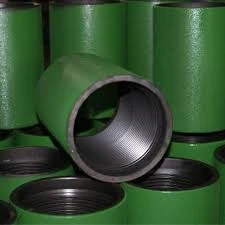- Afrikaans
- Albanian
- Amharic
- Arabic
- Armenian
- Azerbaijani
- Basque
- Belarusian
- Bengali
- Bosnian
- Bulgarian
- Catalan
- Cebuano
- Corsican
- Croatian
- Czech
- Danish
- Dutch
- English
- Esperanto
- Estonian
- Finnish
- French
- Frisian
- Galician
- Georgian
- German
- Greek
- Gujarati
- Haitian Creole
- hausa
- hawaiian
- Hebrew
- Hindi
- Miao
- Hungarian
- Icelandic
- igbo
- Indonesian
- irish
- Italian
- Japanese
- Javanese
- Kannada
- kazakh
- Khmer
- Rwandese
- Korean
- Kurdish
- Kyrgyz
- Lao
- Latin
- Latvian
- Lithuanian
- Luxembourgish
- Macedonian
- Malgashi
- Malay
- Malayalam
- Maltese
- Maori
- Marathi
- Mongolian
- Myanmar
- Nepali
- Norwegian
- Norwegian
- Occitan
- Pashto
- Persian
- Polish
- Portuguese
- Punjabi
- Romanian
- Russian
- Samoan
- Scottish Gaelic
- Serbian
- Sesotho
- Shona
- Sindhi
- Sinhala
- Slovak
- Slovenian
- Somali
- Spanish
- Sundanese
- Swahili
- Swedish
- Tagalog
- Tajik
- Tamil
- Tatar
- Telugu
- Thai
- Turkish
- Turkmen
- Ukrainian
- Urdu
- Uighur
- Uzbek
- Vietnamese
- Welsh
- Bantu
- Yiddish
- Yoruba
- Zulu
pup joint specifications
Understanding Pup Joint Specifications in Oil and Gas Industry
In the oil and gas industry, the functionality and reliability of drilling equipment are paramount. One critical component in drilling operations is the pup joint. This article will delve into the specifications of pup joints, their applications, and their importance in ensuring the efficiency and safety of drilling operations.
What is a Pup Joint?
A pup joint is a short section of pipe used to extend the reach of drilling equipment or to make adjustments to the drill string’s length. These joints, usually measuring between 2 to 10 feet in length, can come in various diameters and wall thicknesses, depending on their intended use. Pup joints are integral for managing the overall height of the drill string and accommodating various drilling conditions without having to replace the entire drill string.
Specifications of Pup Joints
Pup joint specifications typically include several key factors such as dimensions, material type, weight, and pressure ratings.
1. Dimensions The outer diameter (OD) and inner diameter (ID) are crucial specifications. The OD generally ranges from 2 3/8 inches to 20 inches, whereas the ID can vary depending on the thickness of the pipe wall. Standard lengths are usually 3, 5, or 10 feet, but custom lengths can also be manufactured to meet specific needs.
2. Material Type Pup joints are primarily made from carbon steel, stainless steel, or alloy steel. The choice of material is influenced by the operational environment, including factors such as temperature, pressure, and corrosion potential. For instance, stainless steel is often used in highly corrosive conditions, whereas carbon steel may suffice for less demanding scenarios.
3. Weight The weight of the pup joint is essential for ensuring the integrity of the drill string. Heavier joints provide increased strength and durability but may affect the overall weight and handling of the drilling assembly. Thus, a careful balance must be struck when selecting the weight based on drilling requirements and rig capabilities.
pup joint specifications

4. Pressure Ratings Pup joints must be capable of withstanding substantial internal and external pressures. Each joint is rated to specific pressure levels based on the material and construction methods used. The American Petroleum Institute (API) standards typically dictate these ratings, ensuring that joints can perform safely under various operational pressures.
5. Connection Types The ends of pup joints can feature different types of connections, including threaded connections (e.g., API standard thread), welded connections, or flanged connections. The choice of connection depends on the specific requirements of the drilling operation, including the ability to quickly disengage and re-engage joints as needed.
Applications of Pup Joints
Pup joints find extensive applications in various aspects of drilling operations, including
- Drilling Extensions They are primarily used to extend the drill string when additional length is necessary, such as in deep-water drilling. - BOP (Blowout Preventer) Installation Pup joints help fit the blowout preventer to the rig’s riser system, ensuring safety during drilling. - Well Intervention They provide flexibility in well intervention operations, allowing for adjustments in the assembly without compromising the integrity of the drill string.
Importance in Drilling Operations
The selection of appropriate pup joint specifications is critical for the success of drilling operations. Using the right components enhances the overall efficiency of the drilling process, reduces downtime, and minimizes the risk of equipment failure. A well-designed pup joint allows for seamless operation in various drilling environments, ensuring that the exploration and extraction of hydrocarbons can proceed safely and effectively.
In conclusion, understanding pup joint specifications is essential for anyone involved in drilling operations within the oil and gas industry. By carefully selecting the right dimensions, materials, connections, and weights, operators can optimize their drilling efficiency while ensuring safety and reliability. As drilling technology continues to evolve, the importance of components like pup joints will only increase, solidifying their role as fundamental elements in the pursuit of energy resources.
-
Tubing Pup Joints: Essential Components for Oil and Gas OperationsNewsJul.10,2025
-
Pup Joints: Essential Components for Reliable Drilling OperationsNewsJul.10,2025
-
Pipe Couplings: Connecting Your World EfficientlyNewsJul.10,2025
-
Mastering Oilfield Operations with Quality Tubing and CasingNewsJul.10,2025
-
High-Quality Casing Couplings for Every NeedNewsJul.10,2025
-
Boost Your Drilling Efficiency with Premium Crossover Tools & Seating NipplesNewsJul.10,2025







